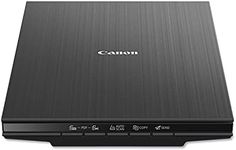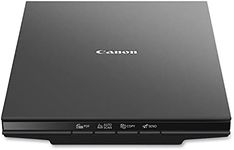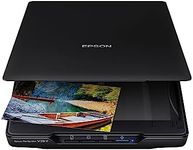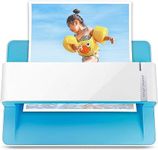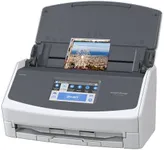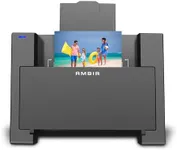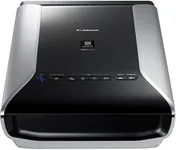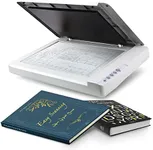Buying Guide for the Best Usb Flatbed Scanners
When choosing a USB flatbed scanner, it's important to consider your specific needs and how you plan to use the device. Flatbed scanners are versatile and can handle a variety of scanning tasks, from documents to photos and even 3D objects. Understanding the key specifications will help you make an informed decision and ensure you get a scanner that meets your requirements.ResolutionResolution, measured in dots per inch (DPI), determines the detail and clarity of the scanned image. Higher DPI values mean better image quality. For general document scanning, 300-600 DPI is usually sufficient. If you need to scan photos or images with fine details, look for a scanner with at least 1200 DPI. For professional photo scanning or archiving, consider models with 2400 DPI or higher. Choose a resolution based on the level of detail you need in your scans.
Scan SpeedScan speed indicates how quickly a scanner can process a page, usually measured in pages per minute (PPM) or seconds per page. Faster scan speeds are beneficial if you need to scan large volumes of documents regularly. For occasional use or scanning a few pages at a time, a slower speed may be acceptable. Consider your typical scanning workload to determine the appropriate scan speed for your needs.
Color DepthColor depth, measured in bits, refers to the number of colors a scanner can capture. Higher color depth results in more accurate and vibrant images. For standard document scanning, 24-bit color depth is usually sufficient. If you are scanning photos or artwork, look for scanners with 48-bit color depth to ensure high-quality color reproduction. Choose a color depth based on the importance of color accuracy in your scans.
ConnectivityConnectivity options determine how you can connect the scanner to your computer or network. Most flatbed scanners use USB connections, which are reliable and easy to set up. Some models may offer additional connectivity options like Wi-Fi or Ethernet, which can be useful for shared office environments or if you prefer wireless operation. Consider your preferred method of connection and whether you need the flexibility of wireless options.
Software and CompatibilityThe software that comes with the scanner can greatly affect its usability and functionality. Look for scanners that include user-friendly software for managing and editing scanned documents. Ensure the scanner is compatible with your operating system (Windows, macOS, etc.) and any specific software you plan to use. Compatibility with document management systems or cloud storage services can also be a plus. Choose a scanner with software and compatibility features that match your workflow.
Size and DesignThe physical size and design of the scanner can impact where and how you use it. Consider the dimensions of the scanner and whether it will fit comfortably in your workspace. Some flatbed scanners are compact and portable, while others are larger and more robust. Think about how often you will need to move the scanner and the available space in your work area. Choose a size and design that suits your environment and usage habits.
Additional FeaturesSome flatbed scanners come with additional features like automatic document feeders (ADF), duplex scanning (scanning both sides of a page), or the ability to scan 3D objects. These features can enhance productivity and versatility. If you frequently scan multi-page documents, an ADF can save time. Duplex scanning is useful for double-sided documents. Consider any extra features that might be beneficial for your specific scanning tasks.

